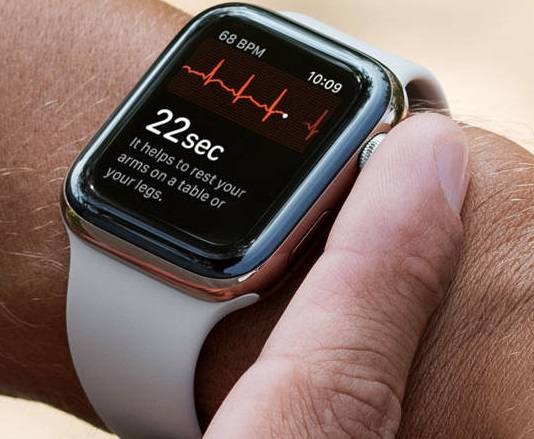 Walmart Health continues Florida expansion with three new centers opening this week–two in Orlando and one in Kissimmee. This adds to their present five in the central Florida area: Orlando, Kissimmee, Ocoee, Sanford, and Winter Garden. By fall, plans are to have 23 in Florida, tracking to the Q1 2024 plan for 75 total, including 28 new locations in the Dallas (10), Houston (8), Phoenix (6), and Kansas City MO (4) metros [TTA 3 Mar]. Becker’s
Walmart Health continues Florida expansion with three new centers opening this week–two in Orlando and one in Kissimmee. This adds to their present five in the central Florida area: Orlando, Kissimmee, Ocoee, Sanford, and Winter Garden. By fall, plans are to have 23 in Florida, tracking to the Q1 2024 plan for 75 total, including 28 new locations in the Dallas (10), Houston (8), Phoenix (6), and Kansas City MO (4) metros [TTA 3 Mar]. Becker’s
New study by AnalyticsIQ indicates nearly half the US population may be adopting wearables and using digital health. Usage doubled in the midst of the pandemic (2020-21) with 46% reporting using at least one type of consumer health technology over the past six months. 35% of the 8,000 respondents used smartwatches, with Fitbit (42%) edging out Apple Watch (38%) followed by Samsung Galaxy Watch and Garmin Vivoactive. By other wearable device type:
- Blood pressure devices: 59% of survey respondents
- Sleep monitors: 21%
- ECG monitors are still a niche: 11%
- Biosensors such as glucose monitors, hormone monitors, fall detectors, and respiratory monitors are still niche at 8%, but the business grew to $25 billion in 2021
- Smart clothing: a surprising 6%.
Unsurprisingly, wearable health tech usage skewed heavily towards Generation X-ers and men. Among ethnic groups, black and Latino groups had the highest usage. Healthcare Dive
Dandelion Health testing cardiac dataset for AI reliability and bias. Starting with their data on ECG waveform algorithms, this startup will be validating the performance and bias of artificial intelligence across key racial, ethnic and geographic subgroups. NYC-based Dandelion is a public-service focused precision analytics company that works with three healthcare systems–Sharp HealthCare (San Diego, California), Sanford Health (Sioux Falls, South Dakota) and Texas Health Resources (Arlington, Texas) to aggregate and de-identify clinical data for roughly 10 million US patients. The validation pilot will start on 15 July and last for an initial period of three months. It may be expanded to include additional clinical data modalities such as clinical notes and radiology imaging. According to their founder and CEO Elliott Green, the “pilot program answers the question, does your algorithm do what it’s supposed to do? And does it do it fairly, for everyone?” Release, Healthcare IT News
Who said big, late raises are a thing of the past? Not if your company is Aledade, which has solidly succeeded in management services for independent primary care practices transitioning to value-based care models. They just gained a shiny new Series F of $260 million on top of last June’s $123 million Series E for a new valuation of $3.5 billion. The Series F round was led by Lightspeed Venture Partners along with Venrock, Avidity Partners, OMERS Growth Equity, and Fidelity Management. Aledade has grown to manage 1,500 practices and has acquired in recent months Curia (data analytics for advance care planning) and Iris Healthcare (care planning technology). The additional funds will be used to opportunistically add capabilities into its platforms. FierceHealthcare, Bloomberg (paywalled)
Somewhat more in the recent range is DUOS’ $10 million venture capital raise for a total of $33 million. Leading the round were Primetime Partners, SJF Ventures, and CEOc’s Aging Innovation Fund managed by Castellan Group. What’s unusual is that the platform addresses older adults’ needs as a personal assistant in areas such as care, support in social determinants of health (SDOH), housing, and transportation against Medicare Advantage plan benefits, local community resources, and government programs. The benefit for the older person is to close gaps in care and increase utilization of Medicare Annual Wellness Visits (AWVs). Originally targeted to older adults, the company is broadening its markets to health plans, providers and employers. Release, Mobihealthnews, Home Health Care News
Insolvent ‘insurtech’ Friday Health Plans loses last two health plans to state receivership, will close. Colorado and North Carolina were the last two states the company operated in. Both states’ insurance departments put Friday into receivership this week after the insurer notified them that they could not raise additional cash to continue operations. This affects 35,000 and 39,000 individual health policyholders respectively. Texas, Georgia, Oklahoma, and Nevada were previously placed in receivership. State insurance regulators have assured providers that they can expect to be paid for their services per their contracts. Members generally need to find new insurance companies quickly, however. 323 Friday employees in Alamosa, Colorado, their headquarters, will be laid off between 23 June (this Friday) and 6 July, without the previously promised 60 day notice nor any notice of severance or benefit continuation. Friday is the largest employer in this Denver/Colorado Springs suburb. In its brief lifespan, Friday raised over $300 million and lost over $700 million. FierceHealthcare 22 June, 21 June. Alamosa Valley Courier Additional commentary by industry analyst Ari Gottlieb on LinkedIn









Most Recent Comments